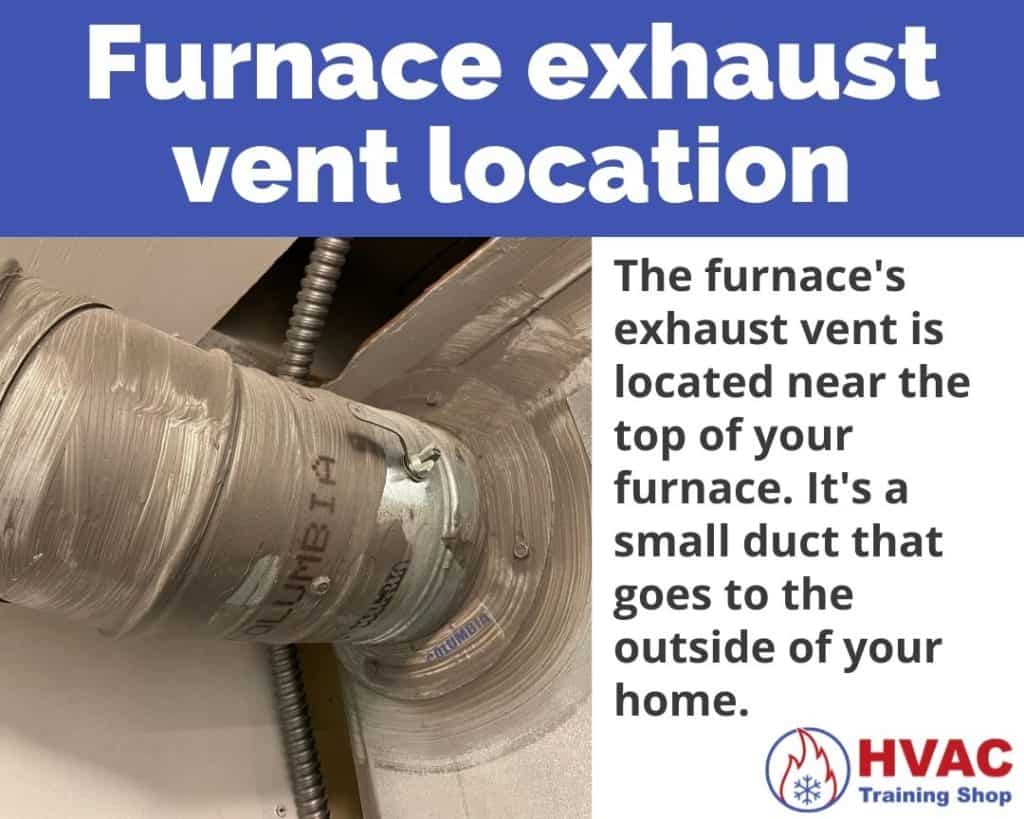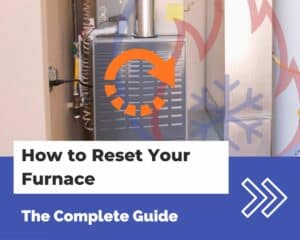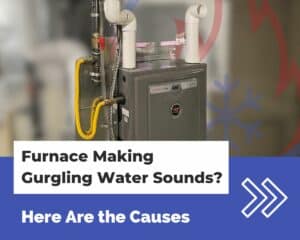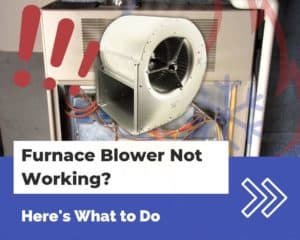Is your furnace not heating up?
It could be due to the exhaust vent.
Blockage in the exhaust vent will prevent your furnace from heating. A blocked vent could also shut your furnace down completely.
In this article, I’ll go over what you should do if your furnace’s exhaust vent is blocked.
I’ll also cover what happens if your exhaust vent is blocked, and what symptoms your furnace will exhibit with a blocked exhaust vent.
What to do if your furnace exhaust is blocked
If your furnace’s exhaust is blocked, follow these steps:
- Remove snow and leaves from the vent exhaust
- Remove soot and debris from the inside of the vent
- Check for damage to the vent
I’ll go over them below.
Remove snow and leaves from the vent exhaust
Snow and leaves are one of the most common sources of furnace exhaust vent blockage.
Go outside your home and take a look at where the exhaust vent pokes out.
If you have snow blocking your vent, you’ll need to shovel away the snow so your vent can breathe.
If you have a pile of leaves blocking your vent, clear out the leaves and rake around your vent so blockage doesn’t happen again.
Remove soot and debris from the inside of the vent
After your vent is clear of external blockages, take a look inside the vent. Do you see anything blocking the vent on the inside?
If the inside of your exhaust vent has soot or debris, clear them out. You may need a tool to clear out the inside of the vent.
Check for damage to the vent
After cleaning the inside and outside of your exhaust vent, the last thing to do is to look for damage to the vent pipe itself.
Is the vent smashed in? Is there corrosion or rust on or inside the vent?
If the vent is damaged, it will need to be repaired or replaced. I recommend getting an HVAC professional to repair the exhaust vent since the vent is a critical part.
What causes a furnace exhaust vent blockage?
Here are some common sources of furnace exhaust vent blockage:
- Rodents/birds inside the vent
- Branches/leaves in brushes
- Snow blocking vent
- Soot buildup in the vent
- Damaged vent
- Corrosion/rusted out vent

How to tell if your exhaust vent is blocked
Here are 4 different ways to tell if your furnace’s exhaust vent is blocked:
- Your furnace doesn’t heat the air
- Your furnace heats up for a little while, then shuts off
- Your furnace cover panel gets hot
- You smell bad smells when your furnace is heating
I’ll go over them below.
Your furnace doesn’t heat the air
By far, the most common symptom of a blocked exhaust vent is a furnace that doesn’t heat up.
This is caused by the pressure switch not triggering when the inducer fan turns on.
The inducer fan’s job is to circulate air through the combustion chamber.
A pressure switch is connected to the inducer fan. It’s used to detect if the inducer fan is blowing air.
If the exhaust flue is blocked, the inducer fan won’t move any air, and the pressure switch won’t trigger.
The furnace won’t proceed to heat until the pressure switch is triggered. This is to ensure that your furnace has enough airflow for complete combustion and to remove gaseous byproducts from your home.
Your furnace heats up for a little while, then shuts off
Another sign that your exhaust vent is blocked is when your furnace heats up for a short time, then it shuts off quickly.
Most furnaces usually repeat this process again, where it turns on and off 3-5 times until it finally shuts down permanently.
Why does this happen?
It’s due to the flame rollout switch.
If your furnace’s exhaust vent is partially blocked, your furnace will get SOME airflow, but not enough.
This causes the flame from the burners to “roll out” of the combustion chamber, and back into the rest of the furnace.
When the flame rolls out of the combustion chamber, the rollout switch detects the heat and shuts off the furnace.
After the furnace shuts down, it will usually turn on and try to run again.
If the rollout switch keeps getting triggered, the furnace will go into a “hard shutdown” mode. In hard shutdown mode, the furnace will need to be reset before it will turn back on again.
A hard shutdown isn’t a nuisance—it’s an important safety function.
A flame rollout is dangerous because the flame could damage the internal components of your furnace.
The hard shutdown will ensure that your furnace doesn’t get damaged. It also ensures that combustion gases don’t leak into the air in your home.
Your furnace cover panel gets hot
If you touch the front cover of your furnace and feel that it’s quite hot, then your exhaust vent might be blocked.
When the exhaust flue is blocked, the flame from the burners won’t get sucked into the combustion chamber.
Instead, the flame may roll out of the chamber and heat up the interior of the furnace, including the front cover panel.
Most times, the flame rollout switch will catch this, and shut off the furnace.
But if the rollout switch is broken the front of the furnace will start to heat up.
You smell bad smells when your furnace is heating
If you have bad smells coming from your furnace while it’s on, then there is a chance that your exhaust vent is blocked.
When your exhaust flue is blocked, the combustion gases from your furnace will get trapped inside your home.
These gases have a distinct smell, so if you smell anything weird from your furnace, shut it off and check if your exhaust flue is blocked.
What happens when your furnace exhaust is blocked?
When your furnace’s exhaust vent is blocked, two things happen:
- Your burners don’t have enough oxygen to completely combust fuel.
- Your furnace is unable to remove dangerous combustion compounds from the air in your home.
Both of these things are bad.
In fact, the combination of both of these things is what makes a blocked exhaust vent even more dangerous.
Let me explain.
First, you have incomplete combustion.
Incomplete combustion occurs when there isn’t enough oxygen in the mixture. This results in partially combusted molecules of gas, which are dangerous to your health.
Second, your furnace is unable to remove those dangerous molecules from the air in your home. This is because your furnace doesn’t have enough airflow to do so.
The result is a dangerous situation– where your furnace is creating dangerous gases (such as carbon monoxide), and those gases are seeping into the air in your home.



